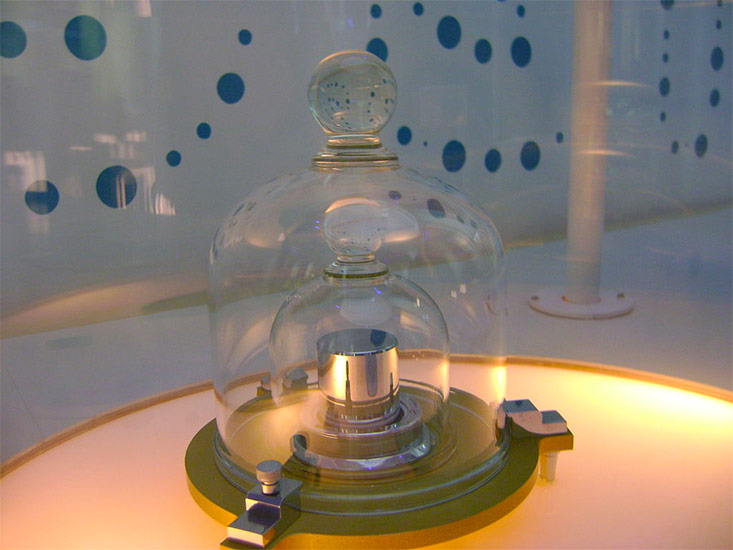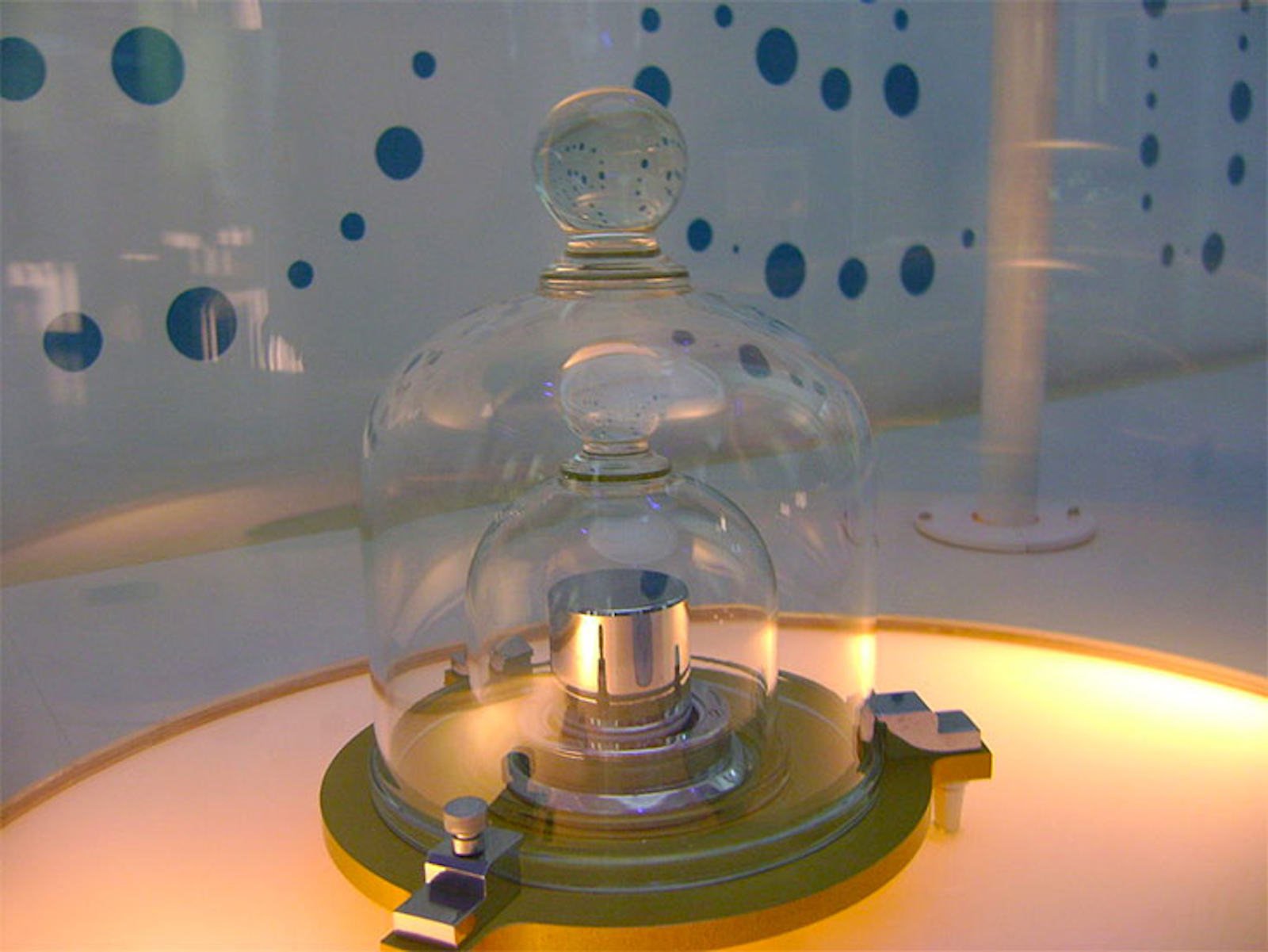A physicist at the National Institute of Standards and Technology once said, “If somebody sneezed on [the] kilogram standard, all the weights in the world would be instantly wrong.”
He was referring to a cylinder, sometimes called Le Grand K, which is housed in a vault in Paris and handled like a priceless gem. The mass of anything measured in the world—you, your groceries, exoplanets, galaxies—traces to the mass of this 126-year-old platinum-iridium cylinder*, the so-called international prototype. Researchers in every field of science and engineering need to trust that they’re using the same reference point as every other scientist and engineer. No cylinder, no reference.
Le Gran K is the kilogram against which all kilograms are measured, and scientists do anything to avoid exposing it to dirty hands and dirty air—and especially to sneezes.

Every few decades, since the prototype’s been around, scientists have removed the cylinder, cleaned it with a solvent, washed it with steam, and scrutinized its mass. They verify that its six official copies, housed in the same vault, still match up exactly.
Three verifications, roughly 40 years apart, have occurred since 1889. In 1992, disaster struck: A comparison of the second and third measurements suggested either that the original had lost about 50 micrograms—around the mass of a grain of sand—or that the copies had gained that amount. Though miniscule, those measurements showed that “the kilogram is not stable,” says Peter Mohr, a physicist involved in an effort to redefine the basic units of measurement.
This is why many scientists decry the primacy of the cylinder as an outright embarrassment with the potential to wreak havoc on the practice of science. As the 2014 Norwegian film 1001 grams put it, “Man determines the definition of weight, but it’s equally important to understand what the definition of weight does to man.”
Fortunately, all this is about to change.
All of the problems with Le Grand K and its ilk go away when you use the fundamental constants of nature. Since they are invariant by definition (barring some new physics), they can be used define all the basic units, including the kilogram, without being vulnerable to an errant sneeze. That’s on track to happen in 2018, says Richard Davis, a physicist at the International Bureau of Weights and Measures, which officiates the International Standard units of measurement.
Some basic units have already been upgraded. The second, for example, used to be defined as some fraction of a day, but is now defined by how often electrons in an atom of cesium transition between energy levels. The meter, too, is spiffier than it used to be. At the end of the 18th century, the French Academy of Sciences defined a meter as one ten-millionth of the distance between the North Pole and the equator, along the meridian that went through Paris. Nearly 100 years later, the meter became the length of a specific platinum-iridium bar. Most recently, in 1983, the meter was defined as the distance light travels in a vacuum during 1/299,792,458 of a second. This linked the meter to the speed of light, one of the fundamental constants of nature. The candela, the unit of luminous intensity, once depended on the brightness of a specific kind of candle. Now it is also tied to the speed of light.
Other units will soon follow suit. Amperes, the unit of electric current, will be tied to the elementary charge (e), instead of to a hypothetical experiment involving infinitely long parallel conductors. Kelvin, the unit of temperature, will no longer depend on the intrinsic properties of water but on Boltzmann’s constant, which relates temperature to the energy of individual particles. And the mole, the unit of amount of substance, won’t be tied to a generic lump of carbon-12 any longer. Instead it will be derived from Avogadro’s number (6.02×1023).
Last year, as part of this process of redefinition, for only the fourth time in history, Le Grand K was removed from its super-secure vault. It was the beginning of what the Bureau has called the “extraordinary calibrations”—the cylinder was compared to its copies (it didn’t appear to have lost any more weight), and it will soon be used to calibrate new devices that determine mass based on Planck’s constant, a quantity fundamental to quantum mechanics that connects the energy of a photon to its frequency.
Once the mass of the kilogram is grounded in Planck’s constant, Le Grand K will become obsolete.
“The final test,” says physicist Martin Milton, the Bureau’s director, will be to make sure the old and new definitions yield the same experimental results. After that, he says, the round and revered slab of platinum and iridium may still be used by some researchers since it will still have an official mass of one kilogram, “but it will no longer have the special and unique”—or, as others say, embarrassing—role of being the definition incarnate.
The future of Le Grand K is uncertain. Maybe it will find itself languishing in some future museum when someone, having disturbed its collected dust, will finally sneeze on it.
Stephen Ornes is a freelance science writer and has contributed to Discover and New Scientist.
*As originally published, the kilogram was misidentified as a plutonium iridium cylinder. The error has been corrected in the story above.






























